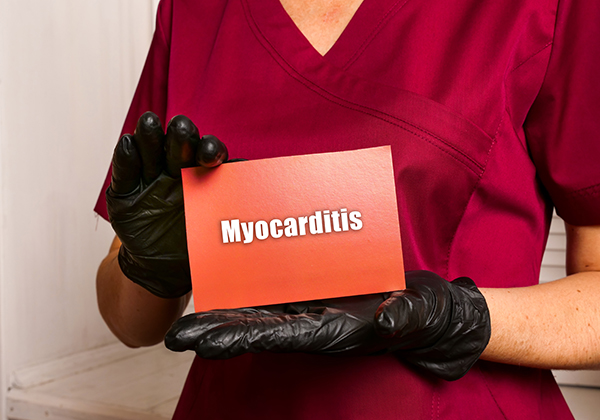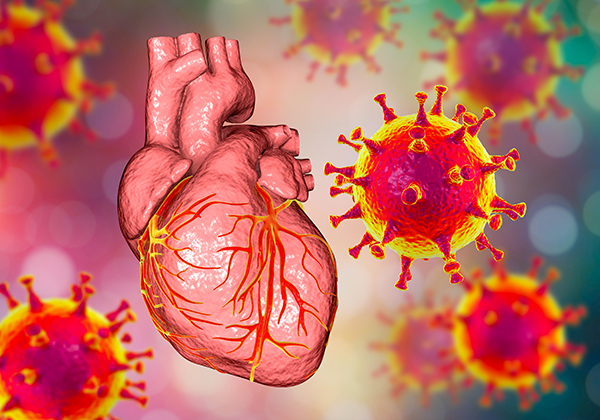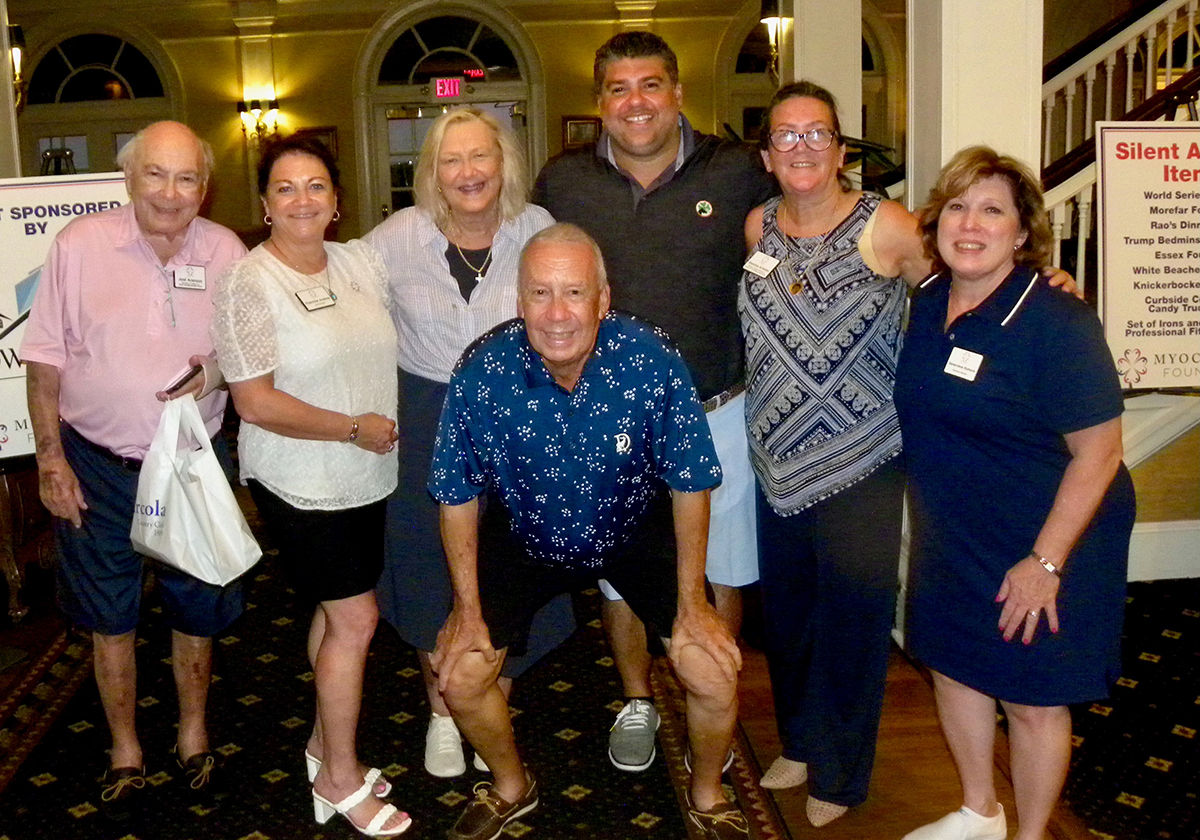(281) 713-2962
800 Rockmead Drive, Suite 155
Kingwood, TX 77339
[email protected]
Full-Field Optical Coherence Tomography (FFOCT) for Evaluation of Bronchoscopic Small Biopsy Specimens
Status: Recruiting
Location: Johns Hopkins University
Conditions: Johns Hopkins University
City/State:
Baltimore, Maryland
Contact Information:
Jeffrey Thiboutot, MD
410-502-2533
[email protected]
Small biopsy specimens obtained through bronchoscopy are commonly employed for the diagnosis and staging of thoracic malignancies. Diagnostic yield is dependent on tissue quality and quantity in specimens obtained through bronchoscopy, and it is thus important to ensure adequate sampling. Rapid on-site cytology (ROSE) is a method used by having a cytotechnologist at the bedside to prepare and analyze specimens to improve the quality of tissue acquisition during bronchoscopy. Although effective, ROSE expertise is not always available to proceduralists, is costly, and reproducible techniques that can be deployed across multiple tiers of institutions are needed across the globe.
Optical coherence tomography (OCT) is an emerging technique which may provide real-time imaging with resolution approaching that of typical histopathology. This has several benefits over ROSE using histopathologic evaluation including rapid imaging with minimal tissue processing, preservation of tissue specimens for molecular testing, enhanced intracellular contrast, and adaptation to machine learning approaches to allow for a reproducible and consistent result. In fact, full-field OCT has recently been applied in several tissue types for evaluation of adequacy of pathologic specimens and evaluation of malignancy, among others. To the best of the investigators’ knowledge, this technology has not yet been evaluated for assessment of specimen quality in bronchoscopic procedures.
Thus, the investigators propose a study of full-field OCT for evaluation of small biopsy specimens obtained through bronchoscopy. The investigators aim to demonstrate the feasibility of this technology in the workflow of bronchoscopy and compare to current evaluation methods including rapid on-site evaluation (ROSE). ROSE is commonly used to evaluate adequacy of tissue diagnosis during bronchoscopic procedures including at this institution. However, studies have not shown definitive benefits over bronchoscopy without ROSE, and current expert guidelines suggest bronchoscopy with Endobronchial Ultrasound (EBUS) transbronchial needle aspiration (TBNA) may be performed with or without ROSE.
Full-field OCT has several potential benefits compared to ROSE, including rapid analysis with minimal tissue processing and preservation of tissue for further molecular testing. In addition, OCT has been used to assess surgical biopsy specimens in a non-destructive manner, so the tissues can be analyzed after imaging using standard cytological and pathological methods. Full-field OCT evaluation may be applied to other diseases in addition to further augmenting the diagnostic ability through the use of machine learning approaches.
Read more
Medication Adherence in Patients With Sarcoidosis
Status: Recruiting
Location: Johns Hopkins Bayview Asthma and Allergy Center, Johns Hopkins Greenspring Station
Conditions: Johns Hopkins Bayview Asthma and Allergy Center, Johns Hopkins Greenspring Station
City/State:
Baltimore, Maryland
Timonium, Maryland
Contact Information:
Michelle Sharp, MD, MHS
410-550-7753
[email protected]
Amanda Sevilla, BA
410-550-1859
[email protected]
A Study of XTMAB-16 in Patients With Pulmonary Sarcoidosis
Status: Recruiting
Location: Xentria Investigative Site
Conditions: Xentria Investigative Site
City/State:
Greenville, North Carolina
Birmingham, Alabama
Denver, Colorado
Jacksonville, Florida
Chicago, Illinois
Iowa City, Iowa
Albany, New York
New York, New York
Philadelphia, Pennsylvania
Baltimore, Maryland
Minneapolis, Minnesota
Detroit, Michigan
Cincinatti, Ohio
Charleston, South Carolina
Houston, Texas
Charlottesville, Virginia
Contact Information:
Xentria, Inc.
224-443-4615
[email protected]
Risk Indicators of Sarcoidosis Evolution-Unified Protocol (RISE-UP)
Status: Recruiting
Location: University of Maryland, University of Texas Southwestern
Conditions: University of Maryland, University of Texas Southwestern
City/State:
Baltimore, Maryland
Dallas, Texas
Contact Information:
Laura Koth
4155144369
[email protected]
Jessica Cardenas
[email protected]
The purpose of this study is to develop prediction models that can prognosticate patients with sarcoidosis using clinical data and biological markers that can be obtained during a clinic visit.
Primary Aim/Objective The primary objective of this study is to determine which clinical features measured during a routine clinic visit are risk factors for progression of pulmonary sarcoidosis over the follow-up period in adults with pulmonary sarcoidosis.
Secondary Aim/Objectives The secondary objective is to determine if blood biomarkers measured during a routine clinic visit can improve the risk assessment for progression of pulmonary sarcoidosis over the follow-up period.
The investigators will measure two types of blood markers to achieve this goal:
-
-
- Clinically available blood markers that are available in most clinical labs
- Blood proteins and gene expression that reflect interferon inflammation and are not currently available as tests in clinical labs
-
Read more
Use of CXCL9 as a Biomarker of Acthar Efficacy (Acthar)
Status: Recruiting
Location: University of California- San Francisco
Conditions: University of California- San Francisco
City/State:
San Fransisco, California
Contact Information:
Laura Koth, MD
(415) 514-4369
[email protected]
Delayed-Enhancement Cardiovascular Magnetic Resonance in Patients With Sarcoidosis
Status: Recruiting
Location: Duke University Medical Center
Conditions: Duke University Medical Center
City/State:
Durham, North Carolina
Contact Information:
Han W Kim, MD
919-668-3539
[email protected]
Raymond J. Kim, MD
919-668-3539
[email protected]
Epigenetic Regulation of Altered T-cell Immunity in Sarcoidosis
Status: Recruiting
Location: University of California- San Francisco
Conditions: University of California- San Francisco
City/State:
San Fransisco, California
Contact Information:
Victoria Wang, BS
415 476 9225
[email protected]
Cardiac Sarcoidosis Randomized Trial
Status: Recruiting
Location: Allegheny General Hospital, Montefiore Medical Center, Ohio State University Medical Center, Tufts Medical Center, University of Michigan, University of Minnesota, University of Utah, Virginia Commonwealth University, Yale-New Haven Hospital
Conditions: Allegheny General Hospital, Montefiore Medical Center, Ohio State University Medical Center, Tufts Medical Center, University of Michigan, University of Minnesota, University of Utah, Virginia Commonwealth University, Yale-New Haven Hospital
City/State:
New Haven, Connecticut
Boston, Massachusetts
Ann Arbor, Michigan
New York, New York
Columbus, Ohio
Pittsburgh, Pennsylvania
Salt Lake City, Utah
Richmond, Virginia
Contact Information:
David H Birnie, MD
613-696-7269
[email protected]
Janine Ryan, BAH, CCRP
613-696-7000 ext 17077
[email protected]
Prospective randomized controlled trial comparing low dose Prednisone(or Prednisolone)/Methotrexate combination to standard dose Prednisone(or Prednisolone) in patients diagnosed with acute active clinically manifest cardiac sarcoidosis and not yet treated.
The Investigators hypothesize that low dose Prednisone(or Prednisolone)/Methotrexate combination will be as effective as standard dose Prednisone(or Prednisolone), and result in significantly better quality of life and less toxicity than standard dose Prednisone(or Prednisolone).
Subjects meeting the study inclusion/exclusion criteria will be randomized equally to receive either:
Everywhere but Japan:
-
-
- Prednisone 0.5 mg kg/day for 6-months (MAX dose 30 mg per day) or
- Methotrexate 15-20 mg po, sc, or IM once a week for 6-months + Folic Acid 2 mg OD for 6 months + Prednisone 20 mg day for 1 month, then 10 mg OD for 1 month, then 5 mg OD for one month then STOP
-
REgiStry Of the NAtural History of recurreNt periCarditis in pEdiatric and Adult Patients (Resonance)
Status: Active not recruiting
Location: Alaska Heart & Vascular Institute, Barnes-Jewish Hospital/Washington University, Brigham and Women's Hospital, Carnegie Mellon University, Cedars-Sinai Medical Center, Children's National Hospital- Washington D.C., Cincinnati Children's Hospital Medical Center, Cleveland Clinic, Detroit Medical Center, Houston Methodist Hospital, Johns Hopkins University, Lender Research Center at the Christ Hospital, Massachusetts General Hospital, Mayo Clinic in Rochester, Midwest Cardiovascular Research Foundation, Minneapolis Heart Institute Foundation, NYU Langone Health, Northwell Health - Lenox Hill Hospital, Northwestern University Medicine, Pima Heart and Vascular, Scripps Health, Seattle Children's Hospital, Swedish Medical Center - Cherry Hill, TKL Research Inc., University of California - San Diego, University of Texas Southwestern, University of Utah, University of Vermont Medical Center, Virginia Commonwealth University
Conditions: Alaska Heart & Vascular Institute, Barnes-Jewish Hospital/Washington University, Brigham and Women's Hospital, Carnegie Mellon University, Cedars-Sinai Medical Center, Children's National Hospital- Washington D.C., Cincinnati Children's Hospital Medical Center, Cleveland Clinic, Detroit Medical Center, Houston Methodist Hospital, Johns Hopkins University, Lender Research Center at the Christ Hospital, Massachusetts General Hospital, Mayo Clinic in Rochester, Midwest Cardiovascular Research Foundation, Minneapolis Heart Institute Foundation, NYU Langone Health, Northwell Health - Lenox Hill Hospital, Northwestern University Medicine, Pima Heart and Vascular, Scripps Health, Seattle Children's Hospital, Swedish Medical Center - Cherry Hill, TKL Research Inc., University of California - San Diego, University of Texas Southwestern, University of Utah, University of Vermont Medical Center, Virginia Commonwealth University
City/State:
Anchorage, Alaska
Tucson, Arizona
La Jolla, California
San Diego
Davenport, Iowa
Baltimore, Maryland
Boston, Massachusetts
Minneapolis, Minnesota
Rochester, Minnesota
Saint Louis, Missouri
Fair Lawn, New Jersey
New York, New York
Cincinnati, Ohio
Cleveland, Ohio
Pittsburgh, Pennsylvania
Houston, Texas
Burlington, Vermont
Richmond, Virginia
Seattle, Washington
Los Angeles, California
Washington, D.C.
Chicago, Illinois
Detroit, Michigan
Dallas, Texas
Salt Lake City, Utah
Contact Information:
Study Director:John F Paolini, MD, PhD,Kiniksa Pharmaceuticals Corp
Efficacy and Safety of RPH-104 Treatment in Patients With Recurrent Pericarditis
Status:
Location: Virginia Commonwealth University
Conditions: Virginia Commonwealth University
City/State:
Richmond, Virginia
Contact Information:
Antonio Abbate, MD
804-828-0513
[email protected]
The primary purpose of this study is the evaluation of the efficacy and safety of RPH-104 treatment in patients with recurrent pericarditis.
Pharmacokinetic and pharmacodynamic parameters of RPH-104 multiple doses in this patient population will be assessed as well.
This is a phase 2/3 seamless design study with one interim efficacy analysis. At stage 1 (assuming possible 10% dropout rate in run-in period and screening), around 25 patients will be enrolled. At least 20 patients will be randomized to receive either RPH-104 treatment or placebo.
During the interim analysis, the enrollment won’t be paused. Based on interim analysis results the study could be continued or closed. In the case of study continuation, the final estimated sample size is at least 72 patients to be randomized in the withdrawal period (including 20 or more patients randomized in the Stage 1 of the study). Assuming possible 10% dropout in run-in period and 45% dropout in screening period, approximately enrollment of 80 subjects are planned and around 146 subjects will be screened in this study.
The study will consists of five following periods:
- Screening period (up to 4 weeks). The patients’ eligibility for the study will be evaluated based on the eligibility criteria.
- Run-in (RI) single-blind treatment period (16 weeks) will include single- blind treatment with RPH-104 at a dose 160 mg subcutaneous (SC) on Day 0, and 80 mg on Day 7, Day 14 and thereafter once in two weeks (Q2W) for all patients.The RI period includes:
- 2-weeks Stabilization period, during which blinded RPH-104 is administered on top of standard of care (SOC) pericarditis therapy, and the ongoing pericarditis episode is treated.
- 10- week Weaning period, during which patients are gradually tapered and stopped background SOC pericarditis therapy, while treatment with blinded RPH-104 continues. corticosteroids (CS) and analgesics (opioid and non-opioid) dose will be tapered starting at RI week 2 and will be stopped by Week 12. NSAIDs and colchicine will be tapered starting at RI Week 6 and will be stopped by Week 12. Opioid analgesics can be continued after Week 12 at stable doses through the end of the OL period if cannot be discontinued without withdrawal symptoms.
- 4-week Monotherapy period: patients who stopped of background SOC pericarditis therapy will continue to receive blinded RPH-104.
Patients who discontinue SOC therapy and achieve clinical response at Week 16 are eligible for randomization in the randomized withdrawal (RW) period.
- Randomized withdrawal (RW) period (24 weeks) includes double-blind treatment with RPH-104 80 mg or placebo Q2W depending on the randomization group.
- Open-label treatment period (OL) (12 weeks). After completion of the RW period, all subjects that did not discontinue study drug will be transferred to Open-Label (OL) period and will receive open-label RPH-104 80 mg once in two weeks.
- Safety follow-up period includes monitoring of safety for 8 weeks after the last dosing of the study drug for patients who decided not to participate in open label extension long-term safety study (CL04018108).
The total maximal duration of the study for an individual subject will be approximately 64 weeks.






























